A Bikepacking & Fly Fishing Journey on Oregon’s Remote Singletrack
Words and photos by George Terrizzi
The sun baked the back of my neck and simultaneously my face as we slowly mashed the pedals through what can only be described as miles of playground sand in the mid-day sun. I clinched my eyes shut from the stinging sensation of sweat that was pouring down my brow mixing with the sunscreen and dirt residue from the morning’s efforts. Closing my eyes for that second was enough to steer me off course and I washed my bike out again in that loose sand and loudly cursed.
“What are we even trying to accomplish here?!” I cursed for the 30th time that hour. Sure, I knew that bikepacking via true mountain bikes and predominantly on singletrack trails would be challenging—but this was torture.
A lone tall shady tree stood next to the trail and I pushed my way over and collapsed in an exhausted pile under it. A cool breeze whipped up and put me at ease as Galen came over and sat next to me, feeling the same. “How did we end up here?” I said and closed my eyes again slipping into a defeated state.
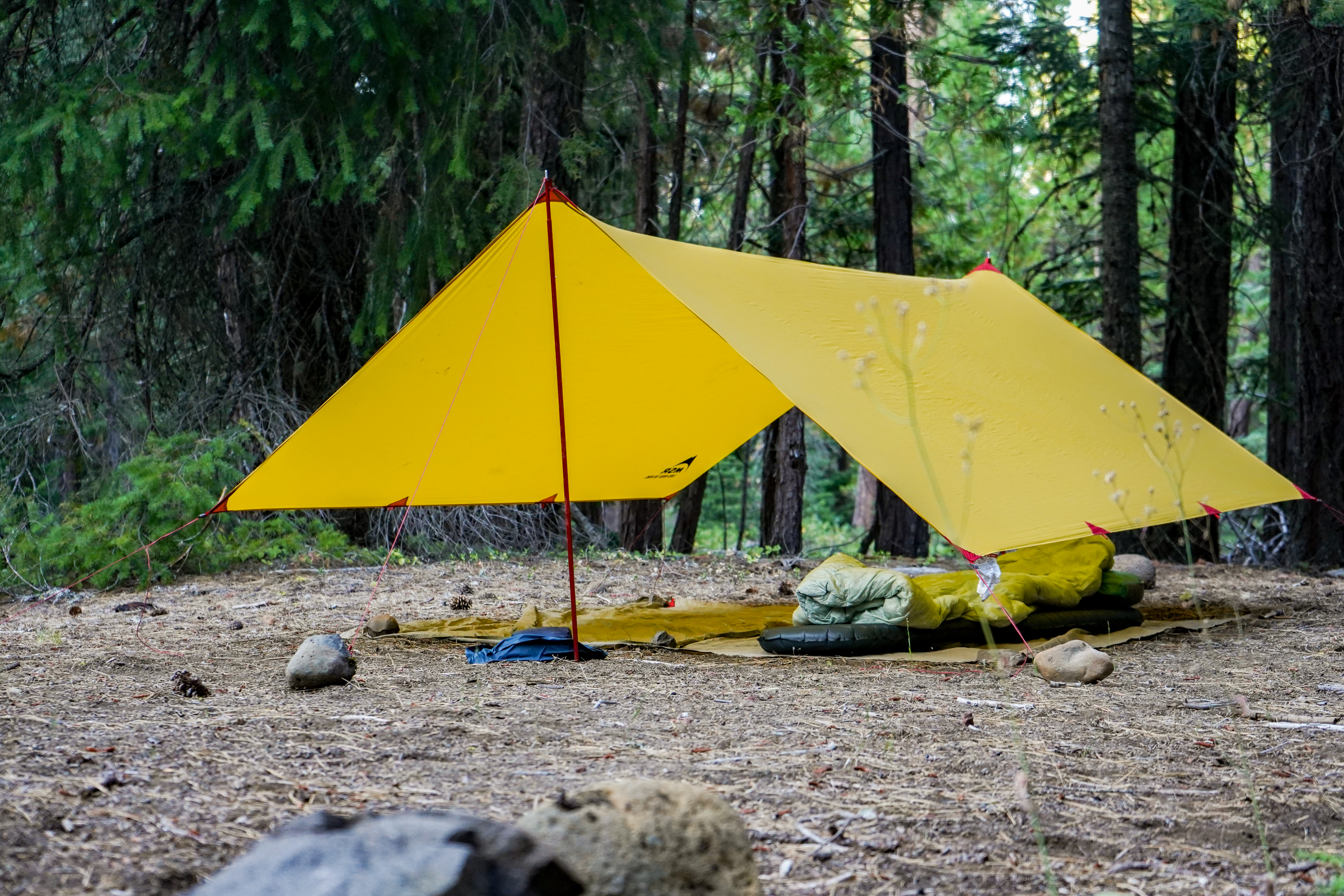
About 8 months earlier, Galen and I came up with the idea for this trip. We wanted something that combined our love of mountain biking, fly fishing, and exploring wilderness areas into one big epic.
Bikepacking has exploded in popularity and as experienced backpackers, that seemed like a fitting place to start, but we wanted to avoid paved and gravel roads in favor of singletrack.
This 330-mile route fit the bill. Mostly singletrack riding that followed some major river systems through Oregon starting in Bend and heading southwest to the small town of Glide. The route would follow the Deschutes, McKenzie, Willamette and North Umpqua river systems along with plenty of lakes and tributaries along the way. Done deal, a mountain biking and fly-fishing dream come true.
I was brought back to reality when Galen insisted I see the huge hornet that had landed on his leg, but it flew off by the time I managed to right myself. With miles left to go, we reluctantly lifted our bikes and saddled up to continue the battle with the sand. Despite my relentless complaining, we eventually found ourselves back in the lush forests that had swept through my imagination when we’d planned this adventure, and all was right in the world again… until it wasn’t.
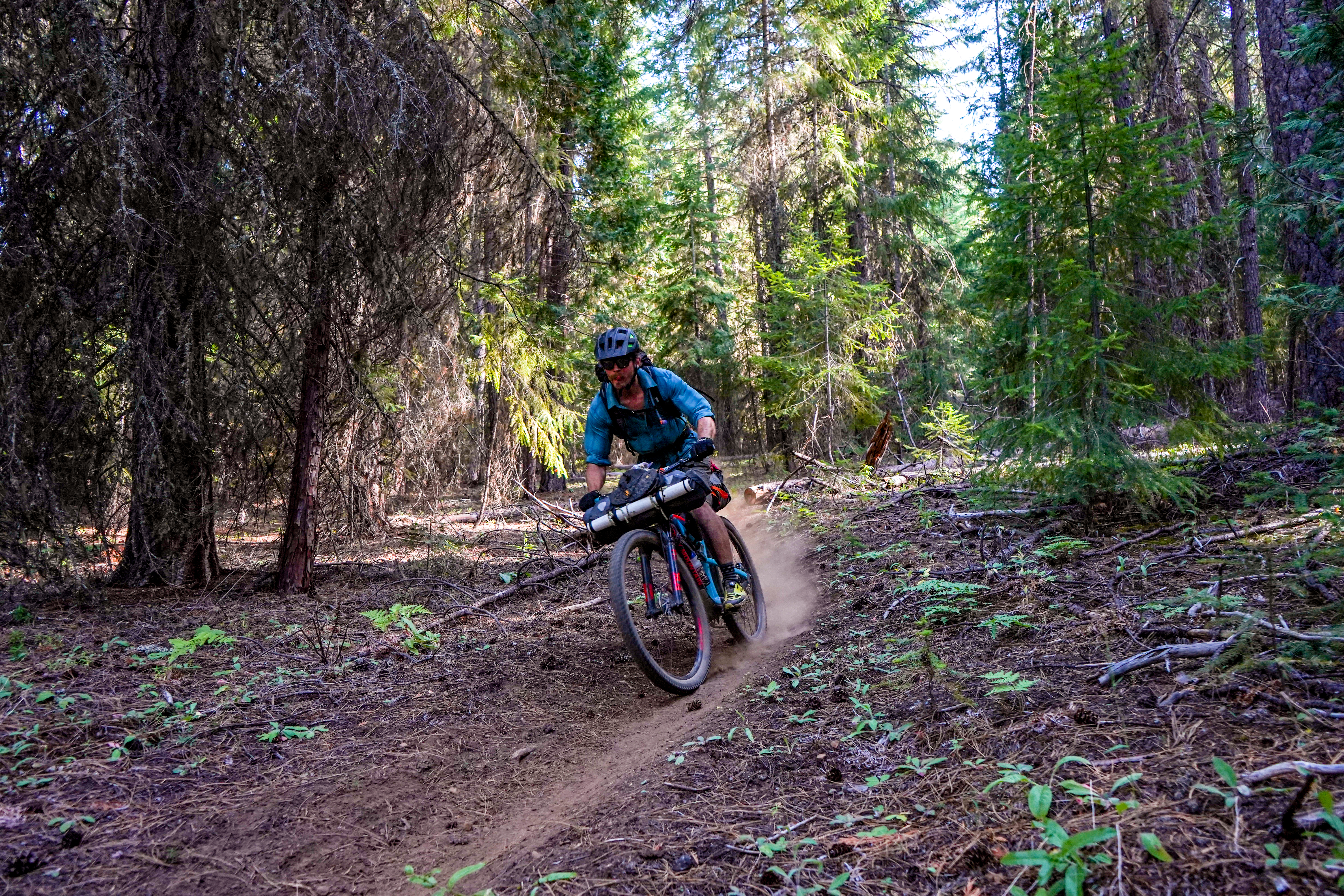
We had made it just over the 100-mile mark when it happened. We were shooting down a blistering fast descent with steep gully walls on either side. With Galen in the lead, dust billowed from his rear tire, forcing me to hold back slightly just to see.
It was about this point that I made a sweeping left and turn and saw Galen laying in the middle of the trail groaning.
It was a case of misfortune that caught him off-guard, resulting in a nasty over the bars wreck, landing him on his head, neck and back in a sandy rocky substrate. The wreck cracked his helmet in 3 spots, ultimately saving his noggin. While there wasn’t immediate medical danger, we needed to pedal 10 more miles to catch a ride out of the woods and back to Bend.
X-rays, a comprehensive checkup, and some muscle relaxers later, Galen was okay but not fit to continue the ride, and the trip took an unexpected change of pace.
Laying in a shaded lawn with the convenience of a cold beer in hand, we discussed our options for moving forward. We decide to spend the rest of the trip exploring by truck and following the main rivers we had hoped to fish–the Deschutes, McKenzie, Willamette and North Umpqua.
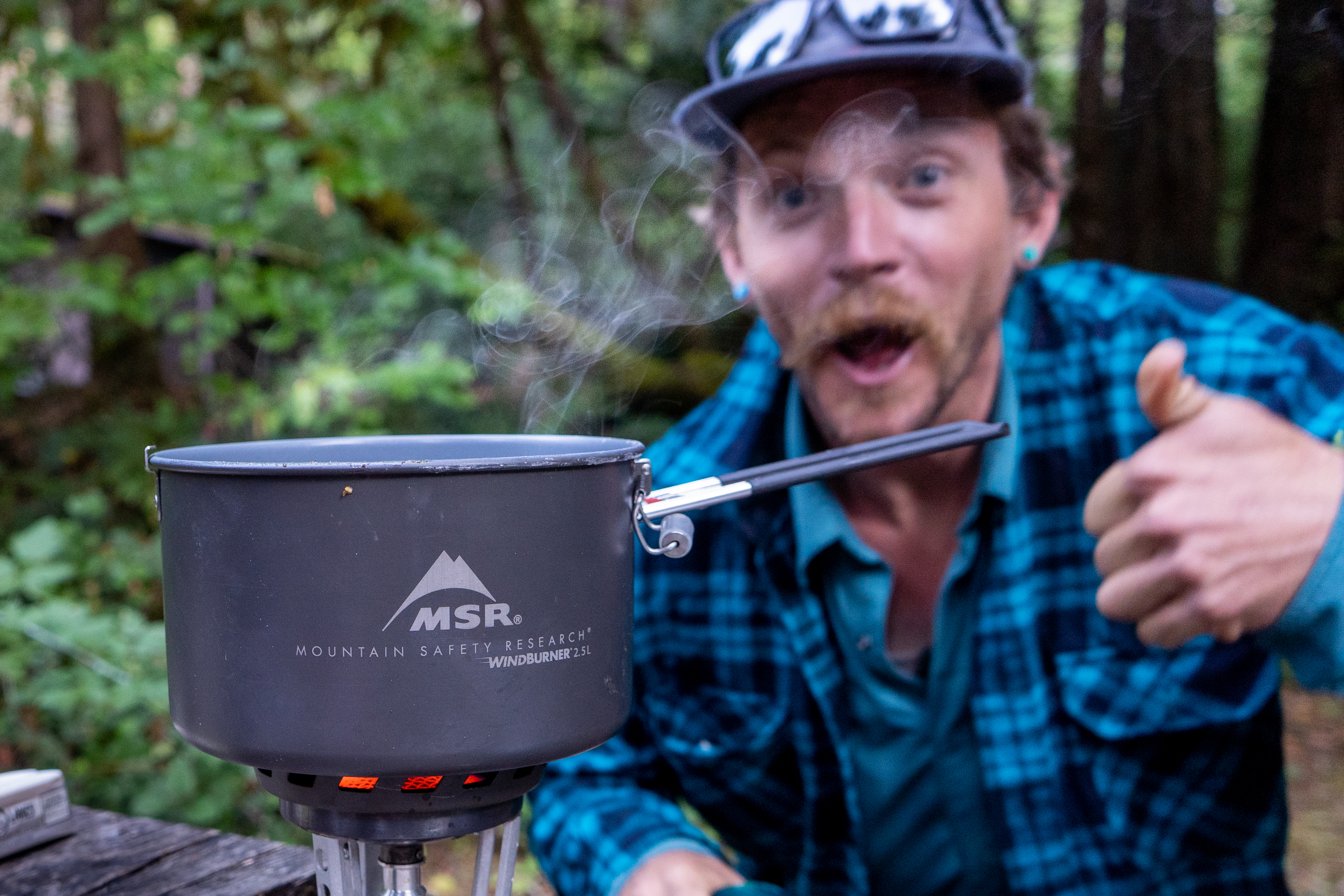
As we camped the next 7 days, I felt like an imposter whenever I looked at my duffel loaded with ultralight gear sitting quietly in the back of the truck. But then something changed as we lay in the dirt watching the silhouette of the trees sway, our minds racing as we began to dream up our next trip.
This type of travel had gotten under our skin and we were eager for the next mission of pedaling through that cursed sand, lifting heavy bikes over downed trees, catching wild fish, and finding remote stretches of trail that provide endless flow.
While our trip took a sideways turn, the first rule of adventure is to be prepared for the unexpected. Here are a few more tips for your first bikepacking trip:
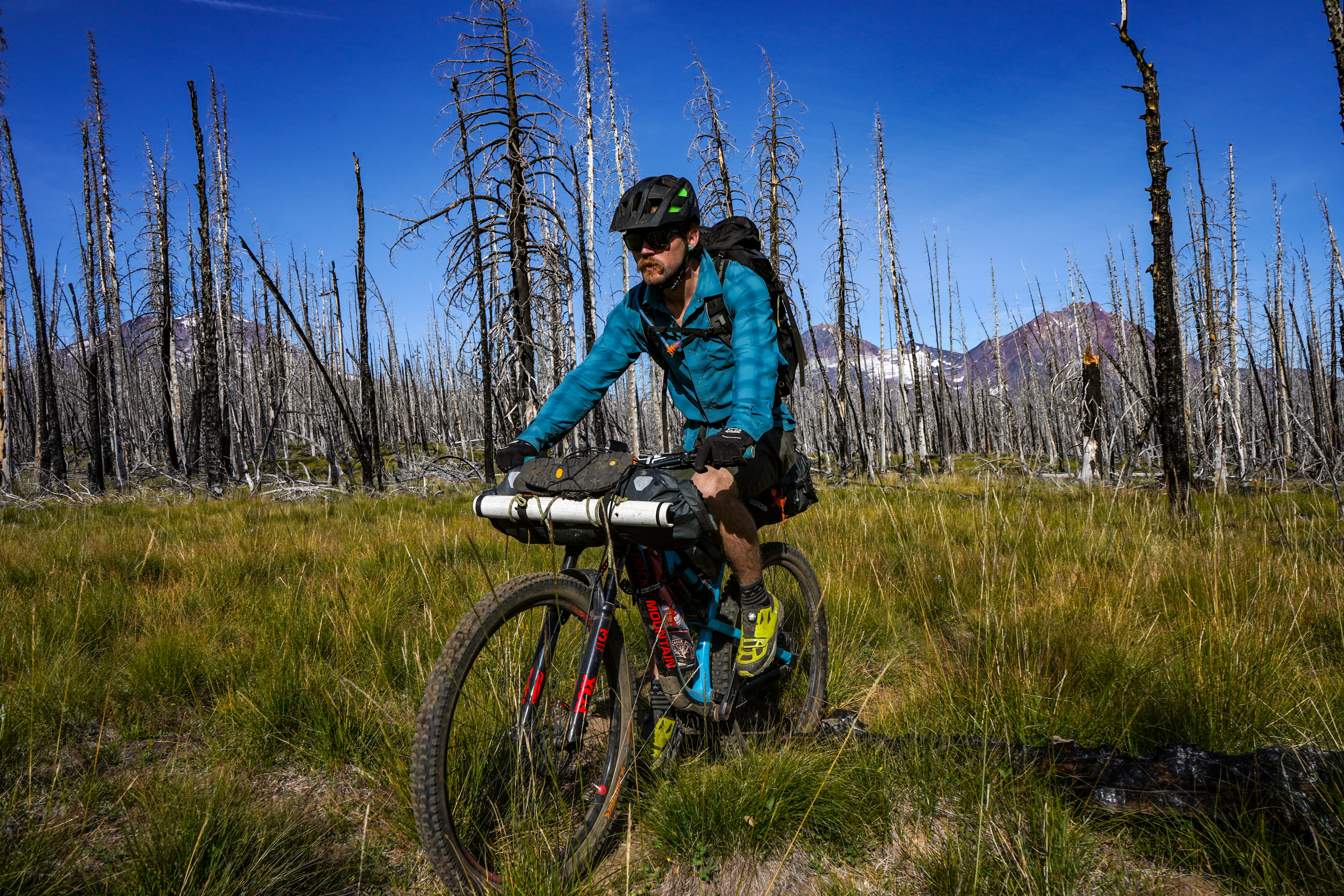
How to plan your first bikepacking adventure:
Months Out:
Route Planning:
We’re fortunate to have virtually all of the information we need in our pocket. Using resources like bikepacking.com or GPS apps like Gaia, allow you to find a route that fits the bill and modify it to your needs. Satellite imagery helped us locate fishing areas, camp locations near water, resupply spots, and trail options.
Training:
Knowing that we would ride roughly 33 miles a day, we determined our fitness levels were ready. But ultimately getting your body used to being in the saddle for long periods of time and riding with a weighted bike is the goal. Plan training rides accordingly.
Systems:
When attempting any human-powered, long-distance objective, weight is of the upmost importance and can add up quickly; ultralight is ultra-great. Gaining an understanding the regional climate is crucial to sorting out a kit that will keep you protected without going overboard.
Once your camp systems are sorted, the next step is figuring out where it all goes. Keeping the weight off your back and your sit-bones is key, so bikepacking specific bags are the way to go.
We opted to use a saddle bag, frame bag, handlebar bag/roll, and a bunch of straps to keep most of our gear sorted.
The most exciting system to figure out is the bike itself. Visit your local shop for recommendations. There’s a great chance your current bike is up to the challenge, but it’ll be good to have their review. If you’re new to this, it’s also a great opportunity to have them make fine-tuned adjustments for your contact points (saddle angle and heights, stem length, etc.), ensuring an ergonomic position you can maintain for days.
You’ll also need to carry a toolkit for the bike. Again, your bike shop can review and confirm you have what you need, and, if they’re willing, walk you through some trailside repair.
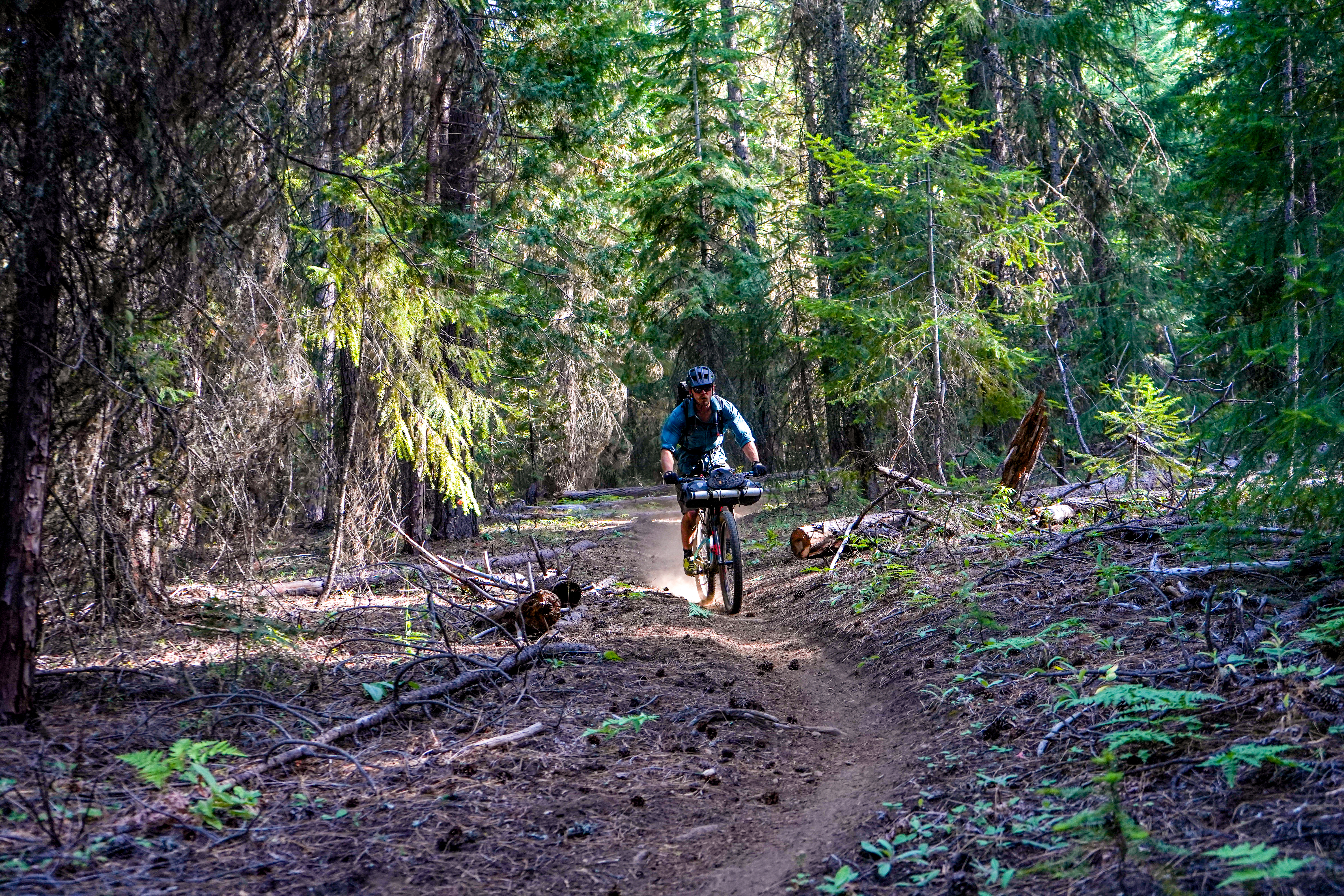
Weeks out:
Shake down:
Keep training for fitness, and do a couple shorter trips to get your systems dialed. Get used to how the bike feels and handles under load. Rearrange until you find the right balance and placement of gear to match your riding style.
Overhaul:
Overhaul your bike to ensure it’s in good working order. Check the bolts, housing, drivetrain, pedals and wheels. Or take it to the shop for a detailed tune up.
Research:
In the weeks leading up to your trip, it’s a good idea to get on the phone and make some calls. Check in with bike shops in the area to confirm the trail systems are open. Call the forest service about fire danger or other environmental hazards, and start paying close attention to what the weather is doing. The more you can make yourself an expert of the area, the better.
On-trail tips:
• Don’t be afraid to change your systems and play with how you load your bike
• Snack like you mean it and with frequency!
• Give a family member or friend a detailed itinerary of your trip and when you expect to be done.
• Swim whenever you can. This will not only cool you off, but helps keep you clean.
• Chamois cream and bibs. Enough said.
• Make yourself a playlist or podcast/audiobook for some extra motivation or to escape for a bit.
• Fill your water whenever you can. Keeping yourself hydrated is paramount and you never know if that water source that looked great on the satellite is as reliable as you think.
• Ride with caution on steeper terrain. This might seem obvious but when on a mountain bike, we can tend to want to have some fun. Just remember that you’ve got more weight incorporated into your system and handling it isn’t the same.
• Carry a taillight in case you find yourself on some road sections. Safety first.
• Enjoy the ride!
